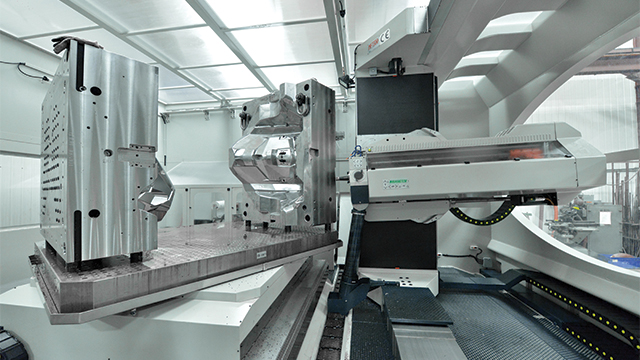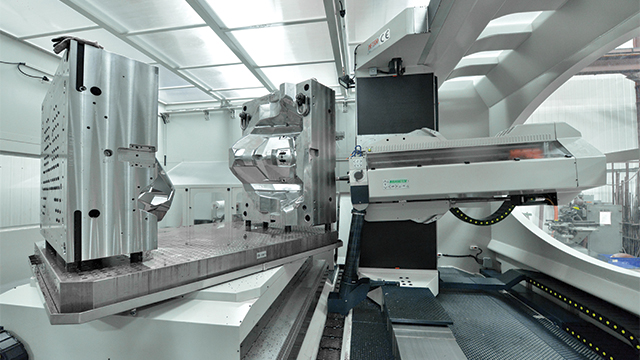
The choice of CAD software a tooling shop uses to design molds can make the difference between short term profitability and sustained success.
Across the world, tooling companies are making a tough choice: to continue designing molds the way they are now or to redefine their place in the global market. At Longterm Technology Services, we’ve worked for decades with countless companies of all sizes. During this time, we’ve found that a shop’s choice of CAD solution is often a clear indicator of which direction they’ve chosen. Ultimately, there are those who view CAD as a commodity and those who view it as an investment in key corporate infrastructure. As we’ll see, the outcomes for each group are very different, and the difference will only increase over time and with pressure from global markets.
Group 1: CAD-as-commodity
These companies typically look at CAD software like they would a carton of milk – more of a commodity than an investment. They try to compare the features and functions of different solutions apples-to-apples and find that they’re pretty much the same. And this is true—if the company is committed to sticking with its status quo design workflow.
For these companies, the ultimate decision driver for CAD is its annual cost. After all, why not choose the cheapest solution when all mold design products appear to be similar? For these buyers, CAD is more commodity than investment. And for buyers of this mindset, it becomes almost impossible to pay more for higher-quality software—as with buying groceries, pricing feels more like a matter of principle than a calculation on returned value.
In the short run, these companies might be fine for two reasons: 1) because of historically high demand in the mold industry, and 2) because they cannot imagine how much more innovative and efficient they could be.
There are many tooling shops that go this route, but we’ve also encountered many that have committed to digital transformation.
Group 2: Digital transformation
Take the story of Cavalier Tool, a tooling shop based in Windsor, Ontario, Canada, that decided to pursue digital transformation. Cavalier made this decision based on the dominant challenges that are impacting the global mold industry:
- growing complexity of new tools,
- globalization
- increasing quality requirements, and
- loss of internal expertise through retirements
Facing this situation, Cavalier had a choice: continue to design and manufacture the same tools they’d always made on acceptable timelines—or seize a new niche in the global market.
Cavalier responded to this challenge with a clear vision: to become a world-class creator of complex tools on timelines that would be inconceivable to global competitors. This focus on complexity and time-to-market would neutralize the threat of lower-priced international competitors and put Cavalier in a whole new class of company.
As part of this plan, Cavalier worked with our team at Longterm Technology Services (LTS). With end-to-end support from LTS, Cavalier invested in the NX CAD for Mold Design, the most powerful and flexible mold design software on the market. They also invested in Dynmik Design for Mold, an add-on to the NX Mold Design package that provides 4D motion simulation and collision checking to validate tools for final delivery.
With end-to-end support from LTS, Cavalier used the power of NX to transform their processes and begin creating more complex tools on much shorter timelines. They were able to do so not only because of NX’s unique features, but more importantly because of the CAD engine underlying these industry-specific features. Cavalier quickly learned that the software they’d previously used might have been geared toward mold design, but its emphasis on industry-specific features left weaknesses in the underlying CAD engine. Being hyper-specialized in the tooling market couldn’t provide these CAD competitors with enough resources to build an underlying CAD engine with the pan-industry power of NX.
Cavalier head of engineering and manufacturing processes Jim Korenev sums up this shift well: “With NX, we could literally generate a mold base in minutes—slides, lifters, hydraulic actions, ejectors pins, standard components, all of it.”
But increased speed was not the only place Cavalier found added benefit, as Korenev continues: “We build very complicated tools at Cavalier Tool. There is no way I can see that we could build these complicated tools without NX.”
The vision
How did Cavalier realize this vision? By treating CAD as an investment rather than a commodity, by focusing on long-term vision over annual cost, and by understanding what it would take to thrive in a global market that will soon wipe out average shops creating simple tools on average timelines. Had they put their CAD decision into a feature/function matrix and simply lined it up against more basic, cost-effective packages, the benefits of NX CAD might have been invisible to Cavalier. That’s because the added benefit of NX’s CAD engine is found in every feature, not just one. [Read more about Cavalier’s success here]

Yes, competing systems can try to mimic NX’s mold design features, but they can’t mimic the power that makes companies around the world use NX for building tools, cars, rockets, trains, smart watches and sneakers. Things like advanced surfacing, smart library creation, parting line creation, design change & propagation control, and design validation depend on the computing power behind them, and no industry-specific software can compete with the power of a global leader like NX.
For those who stay
Of course, many mold shops will choose not to take the path of digital transformation. And as long as industry demand remains at historically high levels, there will likely be enough work to go around and continue supporting these shops. Or maybe these shops will eventually offshore their design work to continue producing simple tools on the timelines they’re used to.
It’s not easy for a manager or executive to embark on digital transformation—to reimagine their company’s position in the global market. But those companies will be at the mercy of external forces instead of controlling their destiny like Cavalier and the many other tooling shops that have undergone digital transformation.
In the end, digital transformation is a decision that every company will need to make for itself.
For those who move forward
We are proud to have a team of industry-experienced experts in NX Mold Design to help your company thrive in the global market. Please don’t hesitate to reach out to Siemens channel partner Longterm Technology Services to chart your path to digital transformation.
About the author
Phil Glennie, Ph.D. is the Director of Marketing and Sales at Longterm Technology Services. Over his career, he has worked extensively in the world of enterprise software, including ERP, APS, and PLM solutions. He is dedicated to helping companies of all sizes take their next step forward in Industry 4.0.
About LTS
Longterm Technology Services based in London, Ontario, Canada, is a recognized Siemens Smart Expert Partner with over twenty years of deep experience helping companies supercharge their products and processes with Siemens Digital Industries Software.

Don’t hesitate to contact Thanh for advice on automation solutions for CAD / CAM / CAE / PLM / ERP / IT systems exclusively for SMEs.
Luu Phan Thanh (Tyler) Solutions Consultant at PLM Ecosystem Mobile +84 976 099 099
Web www.plmes.io Email tyler.luu@plmes.io
